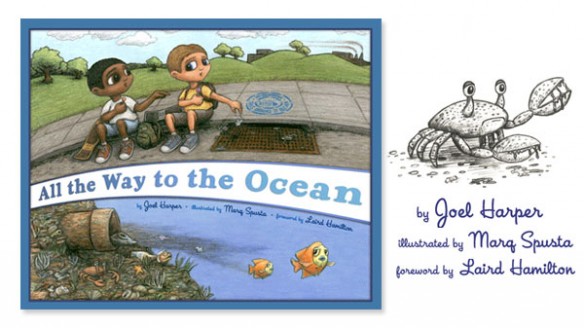
Photograph: © SAF – Coastal Care
Excerpts;
Tout comme un mélange d’eau et de maïzena, le sable gorgé d’eau des plages estivales est un fluide non-newtonien: sa viscosité ne dépend pas seulement de la température. Cette particularité permet de réaliser des expériences «magiques».
WATCH: L’étonnante propriéte du sable mouillé, Le Figaro Vidéo.
Translation:
Exactly as a suspension of corn starch (corn flour) aka oobleck, the beach sand immersed in salt water becomes a non-Newtonian system: a fluid whose flow behavior departs from that of a Newtonian fluid, so that the rate of shear is not proportional to the corresponding stress.
In other words, a non-Newtonian fluid, is a fluid whose flow properties are not described by a single constant value of viscosity. Many polymer solutions and molten polymers are non-Newtonian fluids, as are many commonly found substances such as ketchup, starch suspensions, paint, blood and shampoo. In a Newtonian fluid, the relation between the shear stress and the strain rate is linear (and if one were to plot this relationship, it would pass through the origin), the constant of proportionality being the coefficient of viscosity. In a non-Newtonian fluid, the relation between the shear stress and the strain rate is nonlinear, and can even be time-dependent. Therefore a constant coefficient of viscosity can not be defined. A ratio between shear stress and rate of strain (or shear-dependent viscosity) can be defined, this concept being more useful for fluids without time-dependent behavior.
Although the concept of viscosity is commonly used to characterize a material, it can be inadequate to describe the mechanical behavior of a substance, particularly non-Newtonian fluids. They are best studied through several other rheological properties which relate the relations between the stress and strain rate tensors under many different flow conditions, such as oscillatory shear, or extensional flow which are measured using different devices or rheometers. The properties are better studied using tensor-valued constitutive equations, which are common in the field of continuum mechanics.
As shown in the above video, a non-toxic example of a non-Newtonian fluid is a suspension of corn starch (corn flour) in water, sometimes called oobleck (uncooked imitation custard, being a suspension of primarily corn flour, has the same properties).
The application of force, for example by stabbing the surface with a finger, or rapidly inverting the container holding it, leads to the fluid behaving like a solid rather than a liquid. This is the “shear thickening” property of this non-Newtonian fluid. More gentle treatment, such as slowly inserting a spoon, will leave it in its liquid state. Trying to jerk the spoon back out again, however, will trigger the return of the temporary solid state. A person moving quickly and applying sufficient force with their feet can literally walk across such a liquid.
Shear thickening fluids of this sort are being researched for bullet resistant body armor, useful for their ability to absorb the energy of a high velocity projectile impact but remain soft and flexible while worn. Some shear thickening fluids are also used in all wheel drive systems utilising a viscous coupling unit for power transmission.
A familiar example of the opposite, a shear thinning fluid, or pseudoplastic fluid, is paint: one wants the paint to flow readily off the brush when it is being applied to the surface being painted, but not to drip excessively.
Sand Color Palette
Most beach sand color ranges from pale cream to golden to caramel, but in select places around the world, sand can be red, pink, orange, chocolate, gold, purple, green, or black…










